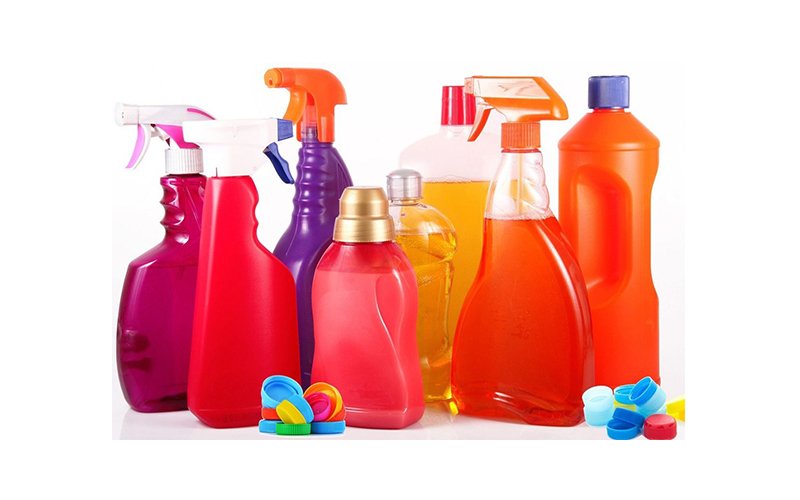In a global marketplace defined by consumer expectations, regulatory shifts, and digital acceleration, the rigid packaging market is rapidly evolving into a critical enabler of product performance and brand trust. No longer confined to its protective utility, rigid packaging now plays a pivotal role in shaping shelf presence, improving supply chain efficiency, and advancing sustainability agendas.
The global rigid packaging market reached USD 479.9 billion in 2023 and is expected to expand at a CAGR of 7.0% between 2024 and 2030, positioning it as one of the fastest-growing segments in the global packaging ecosystem.
Strategic Context: Why Rigid Packaging Now Matters More Than Ever
Rigid packaging has transcended its traditional perception as a cost center. It has become a strategic asset that safeguards brand equity, delivers consumer experience, and supports regulatory compliance. As supply chains globalize and omnichannel retail expands, packaging integrity and consistency have become non-negotiable.
The increased volatility in shipping routes, climate impacts on logistics, and demand for premium, traceable packaging are converging forces that elevate the strategic value of rigid formats—particularly in high-stakes sectors such as pharmaceuticals, electronics, and perishable foods.
Core Drivers Reshaping the Market
1. Consumer Demand for Durability and Transparency
Modern consumers are more informed and quality-conscious than ever. They expect packaging that preserves freshness, prevents damage, and communicates brand authenticity. Rigid packaging formats—ranging from PET bottles and aluminum cans to glass containers—are preferred for their tactile durability and visual transparency. Particularly in e-commerce, where products endure rigorous handling, the need for rigid solutions is amplified.
Beyond protection, rigid packaging also serves as a key medium for transparency. Consumers want to see what they buy—literally. This is especially relevant in food and personal care categories, where see-through plastic or glass enhances trust.
2. Urbanization and Consumption Growth in Emerging Markets
Emerging economies, particularly in Asia-Pacific, are experiencing accelerated urbanization, which directly correlates with increased consumption of packaged goods. Nations like India, Indonesia, and Vietnam are witnessing a surge in middle-class spending power and retail modernization. This, in turn, boosts demand for durable and transport-friendly packaging.
Governments in these regions are also investing in cold chain infrastructure, pharmaceuticals, and food processing—all industries heavily reliant on rigid formats for logistics reliability.
3. Technological Breakthroughs in Manufacturing
Recent advances in molding, automation, and material science are revolutionizing how rigid packaging is produced. Blow molding and thermoforming techniques are now more cost-efficient and environmentally optimized, enabling faster turnaround and reduced waste. Automation not only accelerates production but ensures consistency in large-volume manufacturing environments, which is critical for global brands maintaining uniform packaging standards.
Segment Dynamics: Materials and Industry Use-Cases
By Material Type
- Plastics: Dominates due to its versatility, lightweight nature, and moldability. Recyclable PET and HDPE are being increasingly adopted to align with environmental targets.
- Glass: Continues to hold strong in premium and health-conscious segments, offering non-toxicity and reusability.
- Metal: Aluminum and tin dominate the canned goods and aerosol segment, delivering long shelf-life and high barrier protection.
- Paperboard: Gaining momentum as a biodegradable alternative, particularly in regulatory-tight geographies like Europe.
By Industry
- Food and Beverage: The largest consumer segment. Rigid packaging ensures food safety, extends shelf life, and supports transportation efficiency.
- Pharmaceuticals: Packaging integrity is essential for regulatory compliance and patient safety. Blister packs, rigid bottles, and tamper-evident containers are industry standards.
- Personal Care: Aesthetics and brand differentiation drive innovation in rigid packaging, especially for high-end skincare and fragrance lines.
- Consumer Electronics: Shock-resistance and anti-static properties make rigid containers ideal for packaging gadgets and components.
Regional Market Landscape
Asia-Pacific
The region leads in both production and consumption. China is a global packaging hub, while India’s growth is fueled by a burgeoning e-commerce market and improving logistics networks.
North America
Innovation and automation define this region. Sustainability targets, especially in California and Canada, are pushing a rapid shift toward post-consumer recycled (PCR) materials and reusable formats.
Europe
Sustainability is the defining lens. The EU’s directive on single-use plastics and the Circular Economy Action Plan are transforming procurement policies and material choices in rigid packaging.
Sustainability Pressures and Innovation Opportunities
As ESG goals become mainstream, rigid packaging companies face a dual mandate: maintain performance while reducing environmental footprint. The focus has shifted from lightweighting to full-cycle recyclability, renewable feedstocks, and closed-loop systems.
New initiatives include:
- Bioplastics and PCR Plastics: Increasing R&D in materials made from algae, corn starch, or ocean plastics.
- Modular Design: Rigid formats that can be disassembled and sorted easily for recycling.
- Digital Watermarking: Enabling better sortation in recycling facilities through AI-readable barcodes embedded in packaging.
Such innovations are not just compliance strategies—they are also value-creation levers in markets where brand perception is tied to sustainability performance.
Market Forecast and Long-Term Outlook
Looking beyond 2024, Fortune Business Insights projects the global rigid packaging market to reach USD 704.24 billion by 2032, growing at a steady CAGR of 5.67%. This forecast reflects strong multi-sector demand and consistent investment in innovation, digitization, and green design.
Future trends likely to shape the landscape include:
- Integration of Smart Packaging: RFID, NFC tags, and freshness indicators will become standard in pharmaceutical and food-grade rigid formats.
- Regionalized Supply Chains: In response to geopolitical risks and rising freight costs, many companies will move packaging production closer to consumption hubs.
- Cross-Industry Collaboration: Strategic alliances between material scientists, recyclers, and FMCG brands will accelerate the development of circular packaging ecosystems.
Conclusion: A Market in Reinvention
The rigid packaging industry is not merely growing—it’s evolving. What was once a function of containment is now an integral part of brand strategy, supply chain resilience, and environmental accountability.
For business leaders and investors, this sector represents a compelling opportunity to align financial outcomes with sustainability impact. Companies that prioritize design innovation, regional adaptability, and ESG integration will lead the next decade of growth—not just as packaging providers, but as strategic enablers of global commerce.

